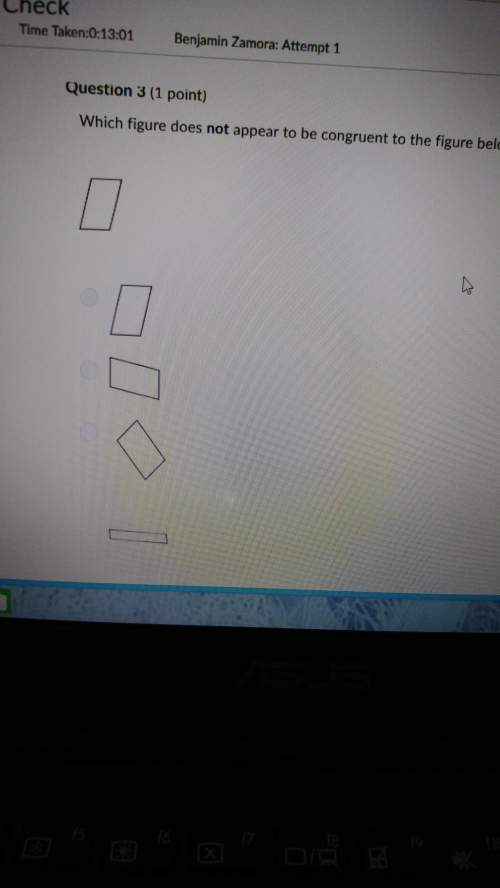
Mathematics, 27.05.2021 14:00 milkshakegrande101
Could the number of cars owned be related to whether an individual has children? In a local town, a simple random sample of 200 residents was selected. Data was collected on each individual on how many cars they own and whether they have children. The data was then presented in the frequency table:
Number of Vehicles Do you have children Total
No Yes
Zero 24 50 74
One 27 25 52
Two or more 57 17 74
Total 108 92 200
Part A: What proportion of residents in the study have children and own at least one car? Also, what proportion of residents in the study do not have children and own at least one car? (2 points)
Part B: Explain the association between the number of cars and whether they have children for the 200 residents. Use the data presented in the table and proportion calculations to justify your answer. (4 points)
Part C: Perform a chi-square test for the hypotheses.
H0: The number of cars owned by residents of a local town and whether they have children have no association.
Ha: The number of cars owned by residents of a local town and whether they have children have an association.
What can you conclude based on the p-value? (4 points)

Answers: 2
Another question on Mathematics

Mathematics, 21.06.2019 18:00
Tickets to a science exposition cost $5.75 each for studentd and $7.00 for adults.how many students and adults went if the ticket charge was $42.75
Answers: 1

Mathematics, 21.06.2019 18:50
Determine which expressions represent real numbers and which expressions represent complex number. asaaap! plis!
Answers: 1

Mathematics, 21.06.2019 19:10
Girardo is using the model below to solve the equation . girardo uses the following steps: step 1 add 4 negative x-tiles to both sides step 2 add 1 negative unit tile to both sides step 3 the solution is which step could be adjusted so that gerardo's final step results in a positive x-value? in step 1, he should have added 4 positive x-tiles to both sides. in step 1, he should have added 3 negative x-tiles to both sides. in step 2, he should have added 4 negative unit tiles to both sides. in step 2, he should have added 1 positive unit tile to both sides.
Answers: 2

Mathematics, 21.06.2019 20:50
There are three bags: a (contains 2 white and 4 red balls), b (8 white, 4 red) and c (1 white 3 red). you select one ball at random from each bag, observe that exactly two are white, but forget which ball came from which bag. what is the probability that you selected a white ball from bag a?
Answers: 1
You know the right answer?
Could the number of cars owned be related to whether an individual has children? In a local town, a...
Questions

Mathematics, 30.07.2019 05:30


Biology, 30.07.2019 05:30




History, 30.07.2019 05:30




Mathematics, 30.07.2019 05:30


Biology, 30.07.2019 05:30


Mathematics, 30.07.2019 05:30

English, 30.07.2019 05:30


History, 30.07.2019 05:30


Geography, 30.07.2019 05:30




